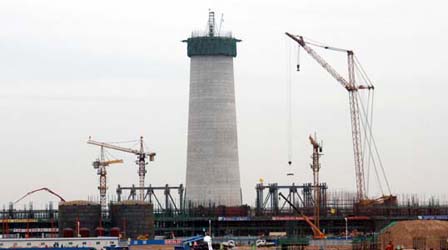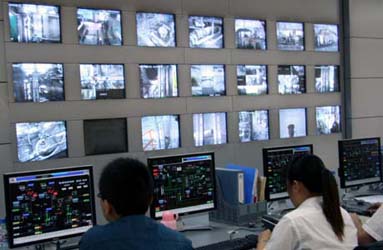Ningdong is situated close to major road and rail networks and is 30 kilometers from the province's main airport. It has access to a plentiful water supply from the Yellow River just 30 kilometer to the west. The area has a population of 70,000, one fifth of whom are farmers.
Mr Ding Ning, director of the project administration office said that the three main chemical products would be dimethyl ether, olefin and methanol. At the end of the first phase of construction in 2010, the base will have an annual production capacity of 250,000 tons of methanol, 210,000 tons of dimethyl ether and 520,000 tons of olefin. By 2020 annual production capacity will have grown to 1,210,000 tons of dimethyl ether and 1,220,000 tons of olefin. There will also be a research and development facility to examine production of new materials. It is expected that all output will be sold on the domestic market.
With China's crude oil imports rising 12.3 percent to 163.17 million tons in 2007, and the price of oil reaching $140 a barrel in 2008, one of the most keenly watched facilities in the Ningdong base will be its coal to oil conversion plants.

Propylene plant under construction at Shenhua Group's new coal-chemical complex in Ningdong, Ningxia Hui Autonomous Region. The plant is due to begin production in 2010.
Mr. He Guopan, deputy director of the project told us there would be two coal-to-oil conversion plants. One will be built in collaboration with South African company Sasol, which became the world leader in coal-oil technology during apartheid-era sanctions. The second plant will be built in collaboration is with Royal Dutch Shell.
Coal liquefaction projects have many drawbacks from the point of view of the environment and resource conservation. Firstly they consume vast amounts of water, which is a huge concern in China's dry northwest. Fifty-seven percent of the land area of Ningxia is desert. The Ningdong coal-chemical base will draw 100 million tons of water from the Yellow river every year. Secondly, the process of liquefying coal emits much more carbon dioxide than conventional coal fired power stations. When fully operational, the Ningdong base will discharge 80,000 cubic meters of Carbon Dioxide (CO2) per day according to Mr. Ding. Finally, while liquefied coal fuels provide an alternative to crude oil, they are not necessarily an efficient use of coal. It takes four to five tons of coal to produce one ton of oil, so coal to oil projects deplete coal reserves much more rapidly than conventional coal power generation.
 Control room of methanol plant in Shenhua Group’s coal-chemical complex, Ningdong, Ningxia Hui Autonomous Region.
Control room of methanol plant in Shenhua Group’s coal-chemical complex, Ningdong, Ningxia Hui Autonomous Region.
Mr. Ding said the company was considering several options to reduce CO2 emissions, including using carbon capture and storage (CCS) technology to bury CO2 as solid waste underground. Another option actively being considered was to use CO2 to manufacture Carbon Monoxide (CO). He could not give a definite assurance that either approach would be implemented but said that CCS technology is mature, and its costs are not prohibitive. Mr. Liu Wanjiu, construction director of the project, told us that 99.5 percent of Sulfur Dioxide (SO2) emissions from a Propylene plant due to go into production in 2010 would be recycled, using technology imported from Germany.
Publicity material for the Ningdong coal-chemical base claims that 100 percent of water used in coal production, and 95 percent of industrial waste water, will be treated and recycled. Presumably it will be used to irrigate the 40 percent of former mining land, and 23 percent of the total base area that according to the plan will be afforested. The base is being constructed on land that is largely desert, under-populated and unsuitable for agricultural use. Industrial processes are being designed to maximize recycling of waste materials. The target is to recycle 95 percent of solid waste.
He Guopan said that all project plans have been approved by China's Ministry of Environmental Protection and that standards meet or exceed all regulations and demands made by the ministry.
Mr. Ding said that the base area will create 30,000 jobs, 100,000 training places, and will increase local incomes by 18 billion yuan per annum by 2020. Net income will reach 30,000 yuan per annum for urban residents and 10,000 yuan for rural residents. He also said construction of the base would contribute to modernizing Ningxia's industrial structure and boost research and development.
(China.org.cn by John Sexton and Pang Li, July 21, 2008)